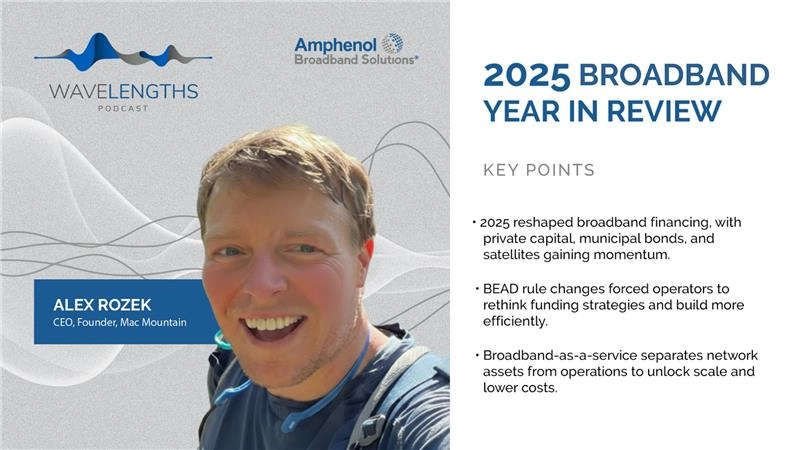Why Businesses are Making More Long-Term IoT Investments
The march toward Industry 4.0 continues, and it seems businesses are more comfortable with their role in this transformation than ever before. Increasingly utilizing IoT as part of their business plans, new research from Information Services Group (ISG) found that companies are not only rapidly revamping their IoT plans, but they’re “growing more ambitious” with the scope of said plans. Businesses are now getting the long-term IoT treatment.
In practice, this means businesses are taking investments into connected device sensors, from tools and equipment to vehicles and buildings, and leveraging each use case’s layers of analytics to create actionable data sources that “derive higher-level business insights.”
But what’s driving this shift? Companies are not only looking to anticipate coming advances to connected technologies, but they’re now making these decisions informed by years of IoT trial runs.
“[There’s] a real shift moving from smaller projects, proofs of concepts, to enterprise-wide deployments,” said Kosten Metreweli, the co-founder and CSO of Sunlight.IO, a U.K.-based edge technology solutions company. “We’ve seen some significant improvements from these pilots, they got very real results, and now they want to expand across their businesses.”
Long-Term IoT Adoption Will Reshape Companies’ IT Workforces
As companies focus on making this shift, two vital areas of their companies are naturally blending together — the operational technology (OT) and information technology (IT) teams. Both areas are increasingly working together due to this more enterprise shift towards IoT, creating ripple effects on the directions and workloads of internal technology teams.
“Those two disciplines are kind of coming together and the much faster pace that IT tends to move at is now being carried across into operational technology, so that’s driving this need to kind of expand these projects out,” Metreweli said.
That fact is nothing new, as the two areas have been commonly integrated more and more in recent years. IoT isn’t just forcing companies to blend the expertise of their internal technology teams, but it’s motivating the more existential union of these practices. Per Tech Target, the growing desire to modernize equipment and bring physical devices into the oversight of digital device management is actually enabling IT/OT convergence in the first place. What is new, though, is the breadth of projects these blended teams are needing to manage.
This growing shift toward long-term IoT adoption is extremely important to professionals in the IoT industry, as its not just shaping what clients are asking for but it’s shaping their clients’ workloads and interactions with technology. Knowing the potential pain points that come from this level of adoption will be critical for solutions providers to guide end-user companies and keep momentum behind IoT strong.
For example. companies that are prioritizing long-term IoT and making investments into connected devices, even with enterprise-level vision, are realizing that getting their teams to learn the hardware systems, software systems, and building the skills it takes to understand IoT for their specific business remain obstacles to successful IoT deployments.
It’s not just an upskilling issue either; it’s a hiring issue, as well. Gartner’s 2021-2023 Emerging Technology Roadmap framed the gravity of this issue well, finding that 64% of IT executives reported talent shortages as the most significant barrier to investing in emerging technologies. As Metreweli puts it, it’s “one of the biggest problems” still looming over companies and their IoT solutions providers.
Another example is the relationship companies have with their hardware solutions. In the last decade, companies have shifted their network needs to cloud services to avoid the cost and responsibility of manning proprietary hardware like entire server rooms, Metreweli explained. However, the expansion of solutions at the edge, including IoT devices, and the growing trend of enterprise-level adoption, means businesses are investing in the very hardware they strayed away from.
“Now suddenly with edge technology and IoT, they’ve got to worry about hardware again and they hate that. So there are providers now, such as ourselves, who focus on delivering this edge capability as a service to them so that they can experience it pretty much as they experienced the cloud,” he said.
Especially with the context of a digital talent skills gap, finding an experienced solutions provider to support enterprise-level IoT adoptions is critical in that it helps insulate companies against having to hire a dedicated IoT team. Instead, that job is relegated to solutions providers.
“What we’re suggesting to our customers is that really they look for solutions that give them as much of this as a service as possible, so that they don’t have to worry about those specific skill sets and indeed they can get those from their solutions provider,” Metreweli said. “Make it as if they’re consuming AWS or Microsoft Cloud, make that super simple.”
Metreweli’s advice lines up with the client needs of the moment; the ISG report’s press release claims enterprises prefer “plug-and-play” interoperability to not only make them easier for internal teams to manage, but to insulate against future upgrades and to avoid becoming dependent on a singular provider.
How Companies are Gauging Long-Term IoT Success
Naturally with the cost of larger projects and the various business goals tied to these investments, incorporating long-term IoT with an enterprise vision in mind can no longer exist in a state of trial and error. To support the scope of these projects, businesses have learned from years of IoT test cases to refine their IoT ROI goals and performance metrics of success.
“Some of the key metrics that organizations are looking to impact with IoT technology and edge technology is first of all efficiency. Driving up quality, reducing downtime on production lines and so on, and improving yields,” Metreweli said.
Metreweli continued that businesses are more critically gauging the quality of the visibility they get from sensor data on edge processes, equipment and vehicles. If businesses can use IoT, from a “more granular perspective,” to understand touchpoints and disruptions across their supply chain, the value proposition increases dramatically. On top of this, IoT’s ability to reduce variable costs for more labor, especially amid a trade skills shortage, is another measure for company’s to gauge the viability of their IoT vision, Metreweli said.
Per Device Pilot, the metrics that businesses and companies should be using as barometers to prove IoT utility haven’t changed much since 2018: connectivity reach, ease of use, active users, uptime consistency, cost-savings and the overall value IoT brings to a company. What’s different this time around is the level of sophistication companies are bringing to the table when measuring these metrics. Metreweli also added that ESG goals are acting as a novel motivating force.
“A lot of organizations are now very actively pushing for net zero, and this is a great way to help them make their business operations far more efficient,” he said.
As more companies move towards investing more into long-term IoT projects and subsequently becoming more well-versed in their respective IoT needs, conversations with solutions providers are also changing. Upfront, companies are going into these discussions to tackle specific needs and providers are increasingly dealing with decision makers who’ve done their homework.
“The conversations are different. I think that the organizations have moved beyond just looking at point projects, and now they’re thinking about, holistically, how can they implement this sort of technology across the biggest sways of their business,” Metreweli said.
“Now they want to make sure that they have not only the solutions that are going to be able to deliver immediate benefits but that will grow with them in the future. So that’s definitely changed how they look at things, everything now has to be enterprise class, has to have that sort of enterprise class support…in order to be effective.”
Preparing for Future IoT Growth
Businesses are taking on larger IoT projects, so it shouldn’t come as a surprise that the IoT industry is projected to continue its growth. In an IoT Analytics report released this spring, it stated that IoT connections are on a steady rise and are projected to grow by 18% in 2022, reaching 14.4 billion devices globally.
As companies continue to expand the depth of their cloud usage while also taking on more edge investments, Metreweli said companies should start taking more risks and be more confident in what the edge can offer them.
“If organizations are kind of prepared to let go of the reins of a bit…then they’re gonna get similar benefits from edge as they have been able to achieve with cloud,” he said.
Industry thought leaders have been signaling the transition away from the cloud and towards the edge for a while now. However, it would be premature to say that companies are abandoning their cloud investments in favor of edge counterparts, or that the growth of distributed IoT at the edge is dependent on a shrinking centralized cloud environment. Both buckets of technology investments play an important role, though edge may take the edge (pun intended) in terms of future growth potential.
Inspur’s IDC-commissioned 2021-2022 Global Computing Index Report found that both edge compute and cloud are seeing adoption growth. Hyperscale data centers still account for more than 50% of all computing power in the report’s surveyed countries; in some countries, upwards of 60% of IT infrastructure computing happened over the cloud. In internet-related market sectors, 90% of IT infrastructure investment went toward cloud computing.
However, the same report predicts that both edge computing and artificial intelligence are only beginning to snowball in popularity. By 2025, IDC predicts nearly 50% of IT investments will be in both edge tech and AI. ISG sees these two investment buckets as linked, explaining in its report that IoT is growing in long-term relevance due the “use of AI and data processing technologies,” which are making IoT devices more able to “securely collect, process and analyze large volumes of information.”
Regardless of its relationship to the cloud, the future looks very promising for edge technologies and for the IoT industry more specifically. Due to the COVID-19 pandemic, a lot of companies had to revamp where they were making investments as lockdowns heavily impacted company operations. But in turn, this disruption led companies to trial new technologies and motivated them to retain their IoT investments. According to research from Gartner, about 47% of firms continued forward with their IoT expenditures during the pandemic. Now with two additional years of training and ROI-refining under their belt, decision makers are preparing to give those pandemic-era investments an enterprise-level upgrade.
Additional writing by Alexandra Simon.








